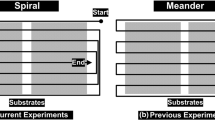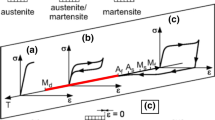Abstract
The highly cavitation erosion-resistant propeller alloys CuAl9Ni5Fe4Mn (Ni-Al-Bronze) and CuMn13Al8Fe3Ni2 (Mn-Al-Bronze) were arc-sprayed using a mixture of nitrogen and 2% of hydrogen as atomizing gas and different traverse speeds. The objective was to identify the influences of the different spraying conditions, such as temperature regime and melting loss, on the resulting residual stress states and coating properties. Residual stresses were measured by the incremental hole-drilling method using ESPI. Temperature measurements were carried out by thermographic imaging. Microstructural, chemical and mechanical analyses were realized to examine adhesive and cohesive properties. Additionally, the cavitation erosion behavior was investigated to analyze cohesive coating properties. The spraying process itself was improved, which was apparent by mainly enhanced deposition efficiency and reduced surface temperatures. The amount of oxides and pores as well as the melting loss of alloying elements were reduced. Moreover, an increased cavitation erosion resistance and thus coating cohesion as well as less residual stresses were identified. The change in atomizing gas diminished the impact of the quenching stresses on the coating properties. In contrast, the adhesive strength, Young’s moduli and partially the hardness were slightly reduced. With regard to materials, Ni-Al-Bronze revealed superior coating properties in comparison with Mn-Al-Bronze.












Similar content being viewed by others
References
Naval Surface Treatment Center, Rudder Coating Failures on Navy Ships, 2003. http://www.nstcenter.biz/wp-content/uploads/mdocs/RudderCoatingFailuresNavyShips.pdf. Accessed 14 July 2017
Standard Test Method For Cavitation Erosion Using Vibratory Apparatus, G32, Annual Book of ASTM Standards, Volume 03.02, ASTM, 2010, p 98-116
J. Carlton, D. Radosavljevic, and S. Whitworth, Rudder–Propeller–Hull interaction: the results of some recent research, in-service problems and their solutions, Proceedings of the First International Symposium on Marine Propulsors - smp’09, K. Koushan and S. Steen, Ed., June 22-24, 2009 (Trondheim, Norway), MARINTEK, 2009, p 262-269
J. Carlton, Propeller maintenance and repair, marine propellers and propulsion, 2nd ed., Butterworth-Heinemann, Oxford, 2007, p 511-519
J.-H. Kim and M.-H. Lee, A study on cavitation erosion and corrosion behavior of Al-, Zn-, Cu-, and Fe-based coatings prepared by arc spraying, J. Therm. Spray Technol., 2010, 19(6), p 1224-1330
F. Lang and W. Krömmer, Economic and ecological benefits of using gas mixtures for arc spraying, Proceedings of the 10th Colloquium High Velocity Oxy-Fuel Flame Spraying, W. Krömmer, Ed., October 29-30 (Erding, Germany), Gemeinschaft Thermisches Spritzen e.V. (Association of Thermal Sprayers), 2015, p 79-88
G.T.V. Verschleißschutz GmbH, Krebs Korrosionsschutz GmbH Rostock, EEW SPC GmbH, Thermal Sprayed Aluminium: A Brand-New Robot-Based Technological Innovation Coating Concept, 2007. https://www.youtube.com/watch?v=O5v73kPugm0. Accessed 14 July 2017
A. Barth, Application Areas of Arc Spraying, Presentation within the seminar “Modern Coating Technologies”, Dortmund, Germany, 5th November 2014, in German
M. Hauer, K. Henkel, S. Krebs, and W. Krömmer, Study of traverse speed effects on residual stress state and cavitation erosion behavior of arc-sprayed aluminum bronze coatings, J. Therm. Spray Technol., 2017, 26(1-2), p 217-228
J. Chi, A. Zhang, S. Xie, and C. Jin, Process optimization and residual stress measurement for arc spraying rapid tooling, Acad. J. Xi’an Jiaotong Univ., 2014, 48(12), p 126-130 (in Chinese)
J. Pina, A. Dias, and J.L. Lebrun, Study by x-ray diffraction and mechanical analysis of the residual stress generation during thermal spraying, Mater. Sci. Eng., A, 2003, 347(1-2), p 21-31
S. Kuroda, T. Fukushima, and S. Kitahara, Significance of quenching stress in the cohesion and adhesion of thermally sprayed coatings, J. Therm. Spray Technol., 1992, 1(4), p 325-332
S. Sampath, X.Y. Jiang, J. Matejicek, L. Prchlik, A. Kulkarni, and A. Vaidya, Role of thermal spray processing method on the microstructure, residual stress and properties of coatings: an integrated study for Ni-5 wt.%Al bond coats, Mater. Sci. Eng., A, 2004, 364(1-2), p 216-231
T.W. Clyne and S.C. Gill, Residual stresses in thermal spray coatings and their effect on interfacial adhesion: a review of recent work, J. Therm. Spray Technol., 1996, 5(4), p 401-408
Y.X. Chen, X.B. Liang, Y. Liu, S.C. Wei, and B.S. Xu, Effect of heat treatment on microstructure and residual stress of wire arc sprayed high carbon steel coating, Surf. Eng., 2010, 26(6), p 407-412
M. Steinzig and E. Ponslet, Residual stress measurement using the hole drilling method and laser speckle lnterferometry: part I, Exp. Tech., 2003, 27(3), p 43-46
G.S. Schajer and M. Steinzig, Full-field calculation of hole-drilling residual stresses from electronic speckle pattern interferometry data, Exp. Mech., 2005, 45(6), p 526-532
H.J. Meigh, Cast and Wrought Aluminium Bronzes: Properties, Processes and Structure, Copper Development Association/IOM Communications, London, 2000, p 3-31, p 293-351
SIKA Dr. Siebert & Kühn GmbH Co. KG, Table of Total Emissivity. https://www.sika.net/images/Documents/Table_of_Emissivity.pdf. Accessed 25 Sept 2017
T. Stoltenhoff, C. Borchers, F. Gärtner, and H. Kreye, Microstructures and key properties of cold-sprayed and thermally sprayed copper coatings, Surf. Coat. Technol., 2006, 200(16-17), p 4947-4960
Acknowledgments
The authors would like to thank all co-workers involved in the study, namely listed in alphabetical order: R. Arndt, A. Herhaus, D. Krüger, N. Németh, A. Novikov, B. Ripsch, M. Schulze, K. Utwich and S. Wachtmann. Furthermore, the authors thank F. Gärtner for his support and the helpful discussions. The research project (No. 18449 BG) of the research community Center of Maritime Technologies (CMT), Bramfelder Straße 164, 22305 Hamburg has been funded by the AiF within the program for sponsorship by Industrial Joint Research (IGF) of the German Federal Ministry of Economic Affairs and Energy based on an enactment of the German parliament. This support is greatly acknowledged.
Author information
Authors and Affiliations
Corresponding author
Rights and permissions
About this article
Cite this article
Hauer, M., Henkel, K.M., Krebs, S. et al. Alternative Gas Mixtures in Arc Spraying: A Chance to Improve Coating Properties and Residual Stress States. J Therm Spray Tech 27, 106–118 (2018). https://doi.org/10.1007/s11666-017-0650-6
Received:
Revised:
Published:
Issue Date:
DOI: https://doi.org/10.1007/s11666-017-0650-6




